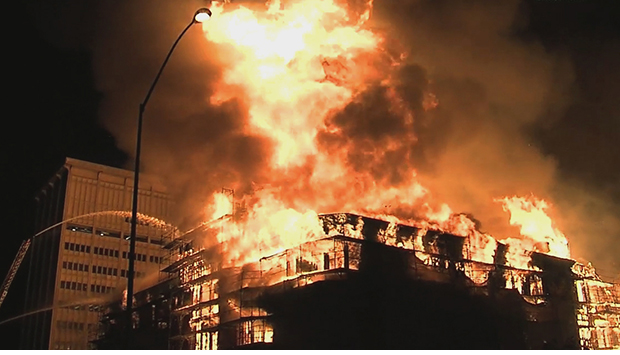Ph.D. student’s new algorithms hasten virtual fire simulations

Chengde Wu
New algorithms that dramatically shorten the time it takes to perform virtual building fire simulations developed by Chengde Wu, a [Ph.D. architecture] (http://dept.arch.tamu.edu/graduate/phd/) student at Texas A&M, can help architects make data-driven decisions to improve fire safety in their building designs.
Wu is detailing the method in his dissertation, which he is completing with the help of a $13,500 university [dissertation fellowship] (http://ogaps.tamu.edu/Buttons/Funding-Opportunities/Dissertation-Fellowship#0-Requirements) from the Office of Graduate and Professional Studies whose application reviewers considered the potential impact of Wu's research and the student’s university academic performance and productivity.
In his dissertation abstract, Wu said that structure fires caused more than 10,000 deaths each year in 27 industrialized countries from 2007 to 2009.
“Although fire safety is a major task in building design, the architectural design process typically does not incorporate fire simulation, because it can take days or weeks with existing software,” he said.
To shorten virtual fire simulation times for structure designs rendered in [building information modeling] (https://en.wikipedia.org/wiki/Building_information_modeling) software, Wu developed and tested a series of algorithms to use with [CFAST] (https://www.nist.gov/el/fire-research-division-73300/product-services/consolidated-fire-and-smoke-transport-model-cfast) , a commonly used fire simulation application, to overcome CFAST’s constraints on the shape and number of spaces in a structure.
“The algorithms sort a building’s rooms based on smoke travel distance and selects the most critical rooms for simulation,” said Wu. By applying these algorithms, the fire simulations in BIM-rendered buildings can be easily performed in CFAST in minutes instead of days.”
Tags
Related Posts

Posters, addresses earn students 2017 research week honors
Grad CoSci student studying method for improved 3-D models
Ph.D. students develop flexible structural system

Light pipe tests under way at daylighting lab

Animation studios present scholarships
Follow Us
Facebook Twitter Vimeo Youtube Flickr RSS
Recent Posts

Planning prof heads study of disaster housing aid

A message from the dean

Former student remembered as expert planner

Leading educator named new head of Architecture Dept.





_thumbnail_small.png)
